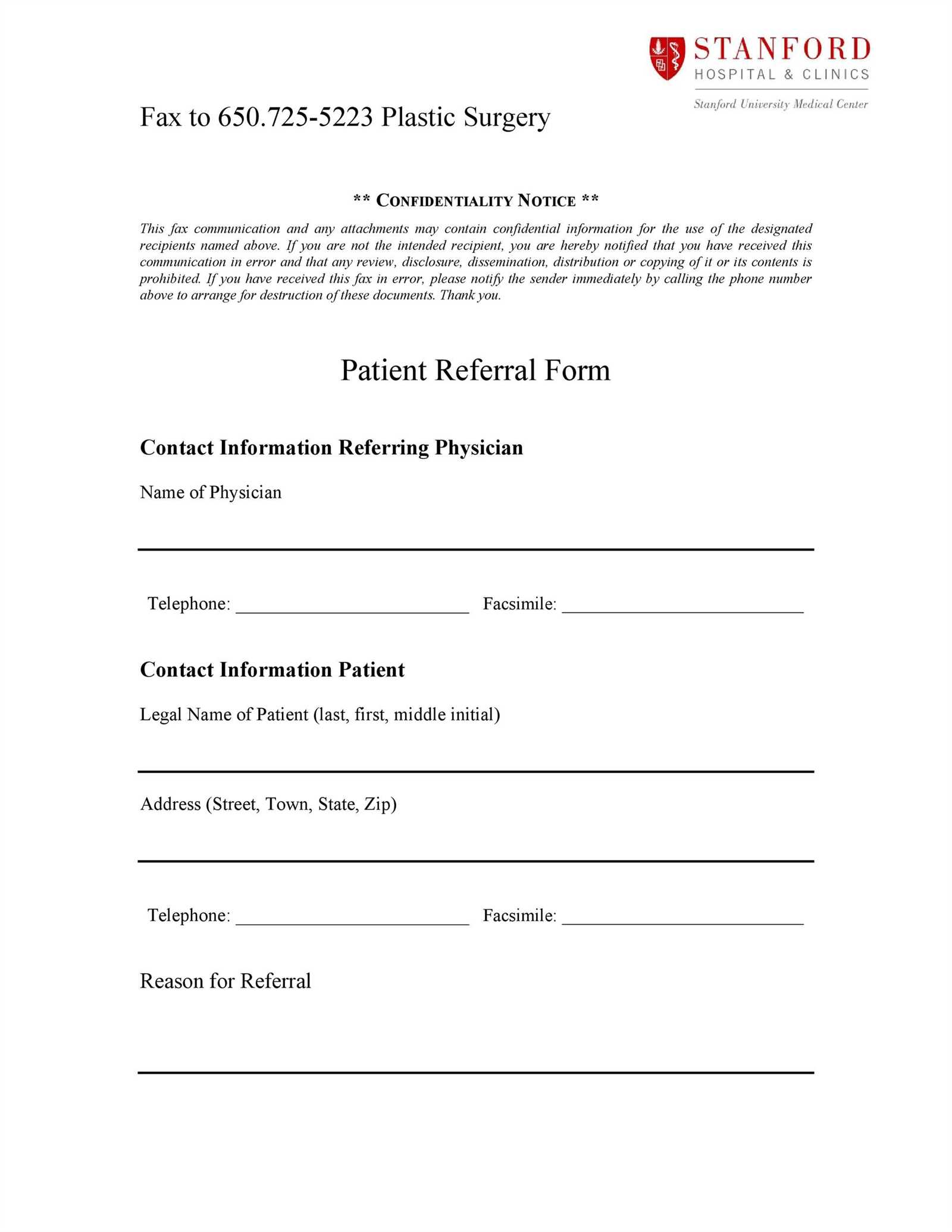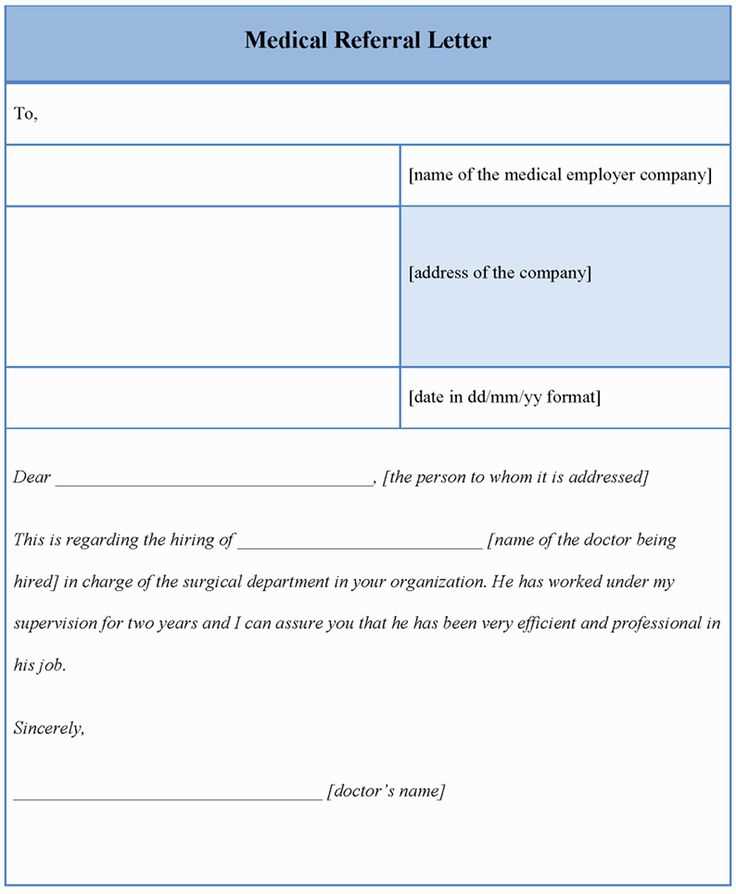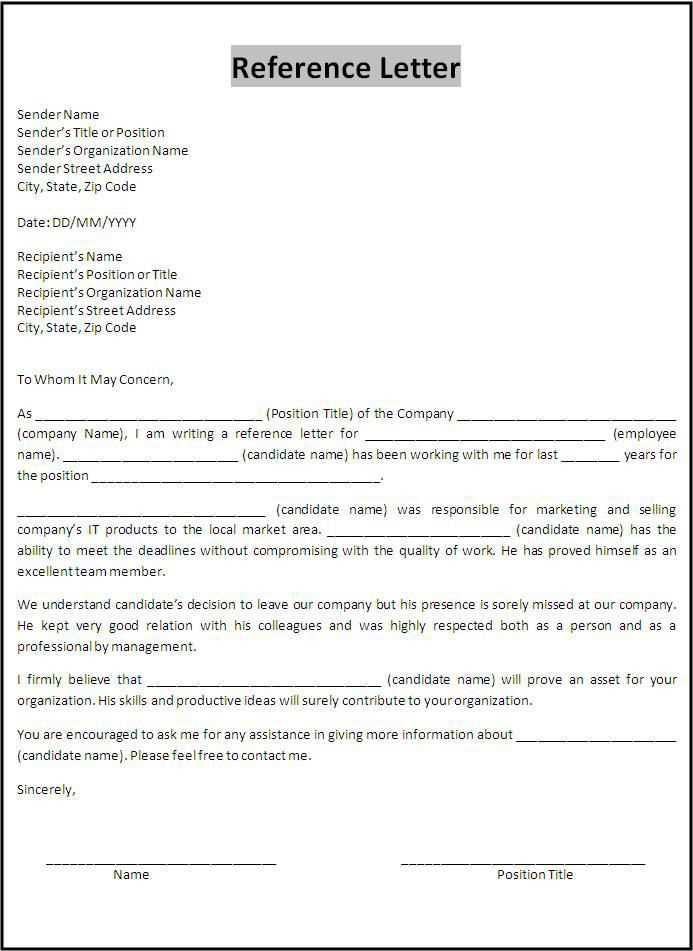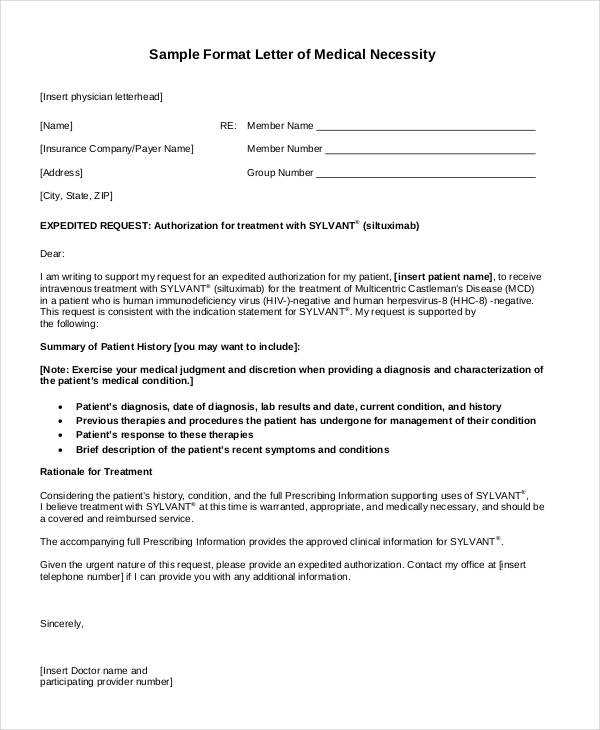Specialist Referral Letter Template for Professional Use

In healthcare, clear communication between medical professionals is essential for providing the best care. When a patient requires the expertise of another healthcare provider, it is important to convey relevant information efficiently and professionally. This ensures that the patient receives timely attention and the transition between caregivers is smooth.
Creating a document that outlines necessary details can greatly enhance the quality of care. By focusing on clarity, accuracy, and professionalism, you can ensure that the person receiving the patient is fully equipped with the right information to proceed with treatment.
Understanding the structure of this communication is key to making the process seamless. There are specific elements that should be included to help the recipient understand the context, diagnosis, and expectations. Adapting this document for various scenarios allows healthcare workers to maintain a high standard of care across different situations.
Importance of a Specialist Referral Letter
Effective communication between healthcare providers plays a critical role in ensuring that patients receive timely and appropriate care. When a patient needs to be transferred to another expert for further treatment or evaluation, it is essential that all relevant details are conveyed clearly. This allows the new provider to make informed decisions and offer the most effective care possible.
Ensuring Continuity of Care

A well-crafted communication document ensures that there are no gaps in the patient’s care. By clearly outlining the medical history, current condition, and specific needs, the healthcare provider can pass on crucial information. This contributes to a smooth transition, preventing delays and misunderstandings during the process.
Building Trust and Professionalism

When transferring a patient to another healthcare professional, a clear and formal document helps establish trust. It reflects the professionalism of the referring provider and shows the patient that their well-being is the top priority. This written communication fosters a strong working relationship between healthcare professionals, which benefits the patient’s overall treatment plan.
How to Structure Your Referral Letter
When transferring a patient to another healthcare professional, it is important to structure the document in a way that ensures clarity and completeness. The goal is to provide all the necessary information that will allow the new provider to understand the patient’s situation and act swiftly. A well-organized document helps facilitate a smooth transition and allows the receiving provider to offer the most appropriate care.
Start by clearly stating the patient’s identity, including essential demographic information, and outlining the primary reason for the transfer. Include a concise summary of the patient’s medical history, any relevant tests or diagnoses, and the current treatment plan. Additionally, be sure to highlight any specific concerns or follow-up actions required. Lastly, include contact details for both the patient and the referring provider to ensure easy communication and follow-up as needed.
Key Elements to Include in a Template
To create a document that effectively conveys all relevant information about a patient, certain key components must be included. These elements ensure that the new provider receives everything necessary for an informed evaluation and can offer the appropriate care. Properly structuring the content enhances both clarity and efficiency.
Essential Information for Patient Identification
The document should begin with identifying details of the patient to avoid any confusion. Basic information such as the patient’s full name, date of birth, contact details, and any relevant medical identification numbers must be clearly stated.
Medical Background and Current Treatment
Next, the document should provide a concise summary of the patient’s medical history, highlighting previous diagnoses, treatments, and any ongoing conditions. Clear and detailed explanations of the current treatment plan and any significant findings are crucial for continuity of care.
| Element | Description |
|---|---|
| Patient Information | Name, DOB, contact details, medical ID |
| Medical History | Previous diagnoses, treatments, conditions |
| Current Treatment Plan | Ongoing therapies, medications, and recommendations |
| Concerns & Recommendations | Specific issues that need attention, follow-up actions |
Tips for Customizing the Letter
When preparing a document for transferring a patient, it’s essential to tailor it to the specific situation and individual needs of the patient. Customizing the communication ensures that all relevant details are highlighted and that the new provider has all the necessary context to make informed decisions. Each case may require slight adjustments depending on the nature of the patient’s condition and the type of care required.
Focus on the Most Relevant Information
While it’s important to include comprehensive details, brevity and clarity should be prioritized. Focus on the key points that are directly related to the patient’s condition and the purpose of the transfer. Avoid overwhelming the recipient with unnecessary background details that could detract from the primary concern.
Adapt the Tone and Language
The language and tone should be adjusted to match the expectations of the recipient. For example, when communicating with a highly specialized provider, you may want to include more technical terminology, while a general practitioner might benefit from a simpler, more accessible approach. Always keep in mind the professional relationship and the level of detail appropriate for the situation.
Common Mistakes to Avoid

When preparing a document to transfer a patient, it’s essential to avoid certain pitfalls that can hinder effective communication. Mistakes in this process can lead to confusion, delays, or a lack of necessary care. By understanding and preventing common errors, healthcare professionals can ensure the transfer process is smooth and efficient.
Overloading with Information
One of the most frequent mistakes is including too much irrelevant detail. While it’s important to provide enough context, an excessive amount of information can overwhelm the recipient. Here are some key things to avoid:
- Excessive medical history not relevant to the current condition
- Unnecessary personal information
- Unrelated test results or treatments
Inaccurate or Incomplete Data
Another mistake is leaving out crucial information or presenting inaccurate details. Omitting critical facts can disrupt the care process and lead to misunderstandings. Some common issues to check for include:
- Missing contact information for the patient or referring provider
- Inconsistent medical records or misdiagnoses
- Failure to mention ongoing treatments or allergies
Best Practices for Sending Referrals

Once a decision has been made to transfer a patient, it’s crucial to follow best practices to ensure the process is efficient and effective. Properly sending a document with all necessary details can make a significant difference in the continuity of care. This section highlights key practices to follow when sending a patient to another provider.
Ensure Clear and Timely Communication
Sending the information promptly is essential for preventing delays in care. Additionally, the communication must be clear to avoid confusion. Key points to consider include:
- Confirm the patient’s appointment with the new provider before sending information
- Verify all contact details for both the patient and healthcare providers
- Follow up to ensure the recipient has received the necessary documentation
Choose the Right Method of Delivery
Choosing the correct method of communication is just as important as the content itself. Consider the urgency and confidentiality of the information when selecting how to send it. Best practices include:
- Sending documents via secure, encrypted channels
- Using fax or direct secure email for sensitive patient data
- Confirming receipt with the recipient for peace of mind